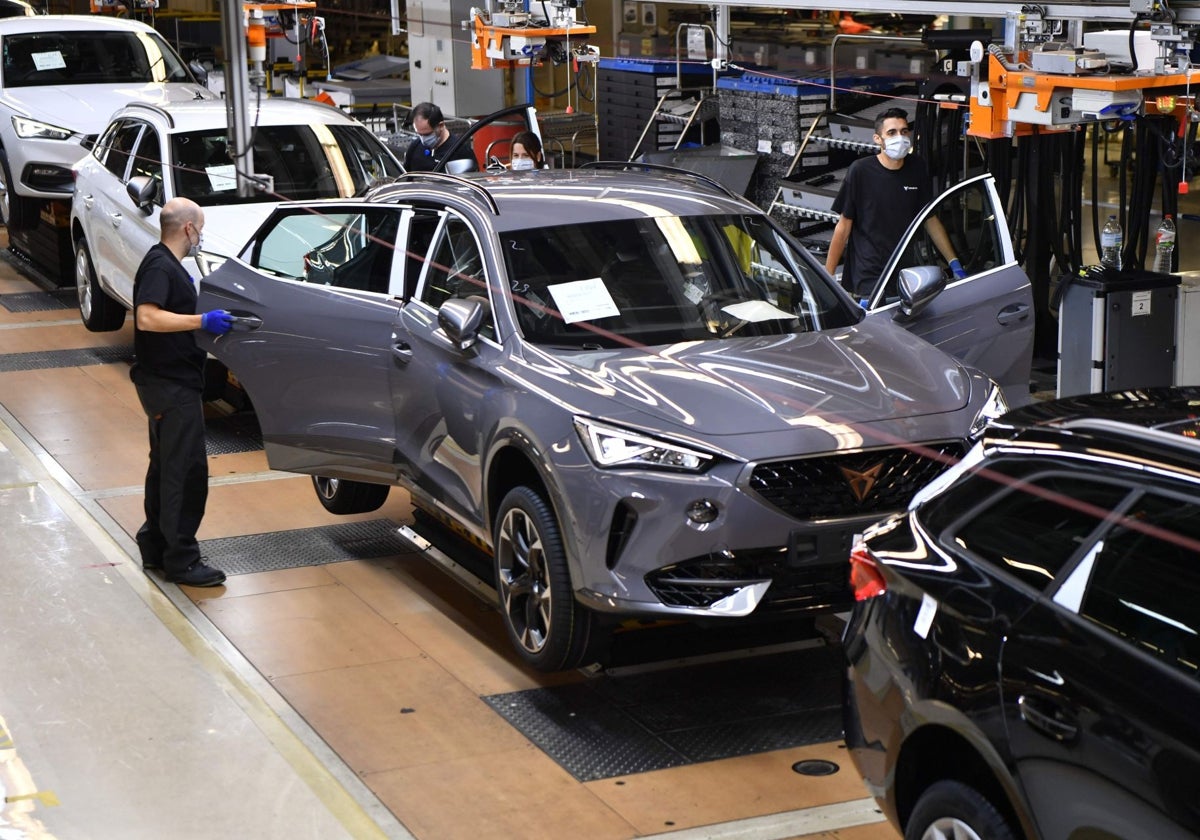Thursday, 2 October 2025, 09:06
The cyclical crises of the automotive industry – the Covid-19 pandemic, semiconductor shortages, tariffs, logistical bottlenecks, stricter emission limits, and the arrival of Chinese manufacturers in Europe – have resulted in a concerning outlook for the community market, both in terms of sales and production.
September was the first month in five years where Spain managed to surpass the registration figures of 2019, although the cumulative total remains 11.5% below. According to the semi-annual report by the European Automobile Manufacturers Association (ACEA), our country, the second-largest producer in Europe, ranks fourth in registrations with 609,801 units, following Germany (1.4 million), Italy (855,000), and France (842,200). However, it is the only one among these showing positive figures compared to the first half of 2024, with a 13.9% increase due to “strong customer demand and government incentives.”
Beyond the fact that the best-selling cars in Spain are particularly affordable – with the Dacia Sandero almost always in the top position – ACEA analyses the propulsion evolution in the European market. A year ago, nearly half of sales were traditional combustion engines, but this figure has dropped to 37.8% of the total.
The most significant growth was recorded by conventional hybrid engines – one of the reasons Toyota has become the global sales leader – which now account for 34.8% of the market.
Fully electric vehicles, a technology the European Commission aimed to impose as part of its environmental strategy and which has cost manufacturers billions to develop, now represent 15.6% of the market share.
However, one of the most interesting data points in the study is “the rebalancing of the country of origin of the vehicles sold,” according to the association. Germany maintained a fifth of its sales weight in the first half of the year, followed by Spain (13%), the Czech Republic (9%), France (8%), and Slovakia (5%). Together with other EU countries, these account for 74% of all vehicles sold within the unified border.
Both South Korea and Japan remained stable compared to last year, with a 4% share, trailing behind Turkey (5%) and tied with Morocco, two countries that have increased their production. China, one of the biggest threats to historic brands, increased its penetration to 6%.
Spain Loses Ground
During the first half of 2025, car production increased by 3.5% to reach 37.7 million units. Of these, 7.4 million (15.9%) came from the European Union, representing a 2.6% decline. It remains the second-largest producing region, but Spain has faced one of its worst years recently in terms of manufacturing capacity.
According to Anfac – the Spanish equivalent of ACEA – this is because the models produced within our borders do not have much acceptance in other community countries, which have stagnant demand. On the other hand, national factories, from which 934,400 vehicles (-12%) were produced, are changing their assembly lines to accommodate the arrival of new electric models set to hit the market in 2026. This considerable setback means that Spain once again falls to the ninth position in the ranking of car manufacturing countries, after having regained it post-pandemic, now ranking below Brazil.
The protagonist, in industrial terms, is China. Its production increased by 12.3% to 13 million units, thanks to “an increase in exports, relaxed credit policies, scrappage incentives, and the recovery of the population’s purchasing power.” Additionally, the Beijing government has just approved a plan to boost electric vehicles in rural areas, which is expected to further enhance their domestic sales.
However, the Chinese market is in a delicate situation, with its main brands embroiled in a price war, significantly reducing their margins and threatening the disappearance of smaller manufacturers for the benefit of more established ones, such as BYD, SAIC, or the Geely Group. This pressure to sell with large discounts has led buyers to hesitate when purchasing a new vehicle, fearing that prices might drop shortly after, resulting in dealerships accumulating inventory from ever-active factories. The situation is becoming increasingly tense, and the government has already attempted to mediate to end the situation, which threatens one of its pillars of growth and foreign trade.
North America does not have a significant presence in the community market, partly because its manufacturers did not want to make the necessary investments to develop models that would meet Europe’s emission limits and partly due to more protectionist policies by the Trump administration. Its production, primarily destined for the American market, was 5.7 million units, with a 6.1% decline for the U.S. Here, factors such as “high prices, inventory corrections, the end of electric incentives, and tougher credit conditions” are cited.
The trade policy of countries has once again demonstrated that the automotive industry is interconnected, with nearly all manufacturers showing declines in their semi-annual results. Companies like Renault, Nissan, Stellantis, Volvo, or Mazda are in negative numbers. Ford, one of Detroit’s ‘Big 3’, barely reached 373 million in profit, an 86.3% decline. Toyota topped the list with a profit of 8,748 million (-35.4%), and the only one showing growth was China’s BYD, with 1,859 million euros (13.8%).
According to a survey conducted by Atrevia for its global mobility trends study, this climate of commercial uncertainty, skepticism towards electric mobility, and the arrival of Chinese brands in foreign markets have made brands cautious, reducing their planned investments in developing new mobility solutions. According to the report, 44% of companies intend to increase their global investment in 2025, the lowest figure in the five years the survey has been conducted. Employment forecasts are also suffering, with an intention to increase the workforce in only 31% of the companies.
Comenta
Reporta un error
